Last updated: April 23, 2024
Article
Conservation Diaries: Wesley Reverdy, International Volunteer
-
Conservation Diaries: Wesley Reverdy, International Volunteer
Listen to this episode of Conservation Diaries as Wesley Reverdy shares his experience as an international volunteer with the Sonoran and Chihuahuan Desert networks.
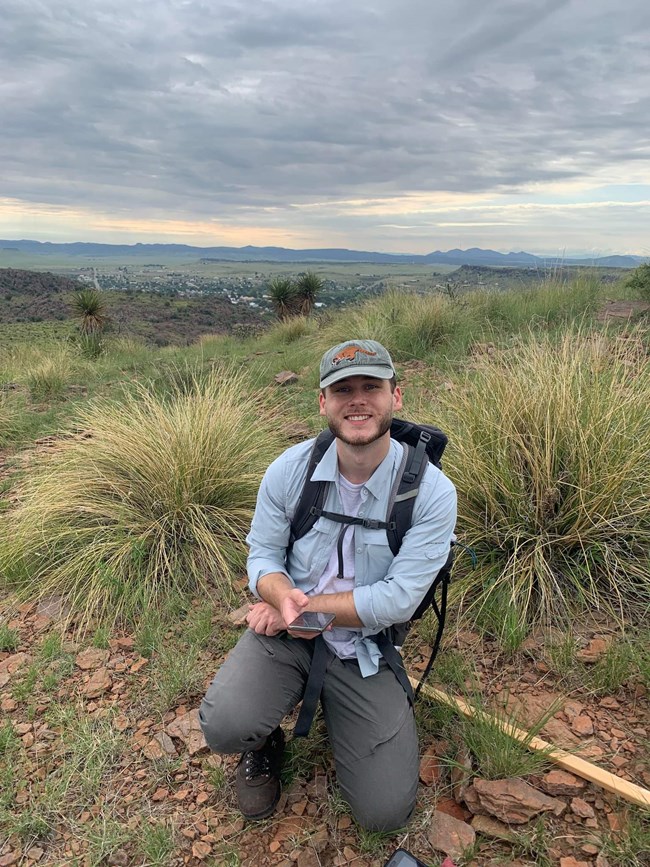
NPS Photo
Wesley Reverdy traveled from his small village surrounded by the Vosges Mountain Range in northwest France to the US to volunteer with the National Park Service during the summer of 2022. Wesley has a passion for nature and spends a lot of time hiking and watching wildlife near his village. For years, he had dreamed of working in a US national park, so he set his sights on interning with the National Park Service to finish his master’s degree in natural resources management
“I was like, yeah, I really want to do that final internship in the USA with the National Park Service, because the National Park Service is a big thing in Europe when it comes to nature conservation especially.” - Wesley Reverdy
Wesley found his way to the National Park Service’s International Volunteers-In-Parks Program’s website and becoming an “IVIP” seemed like a way that he could achieve his goal.
After discovering the IVIP program online, he found he wouldn’t work in just one national park, but several. He was placed with the Sonoran Desert Inventory and Monitoring (I&M) Network, one of 32 I&M networks that work in parks across the US. The Sonoran Desert Network is based in Saguaro National Park in Arizona and serves 11 parks in the Sonoran Desert and Apache Highlands. He also completed a project with the Chihuahuan Desert Inventory and Monitoring Network, based in New Mexico.
I&M network scientists inventory and monitor key natural resources in network parks to determine the current state of wildlife, plant species, water, air, and climate and monitor long-term trends. The Networks share the results with park natural resource managers, which helps them to evaluate the best actions to take for conservation.
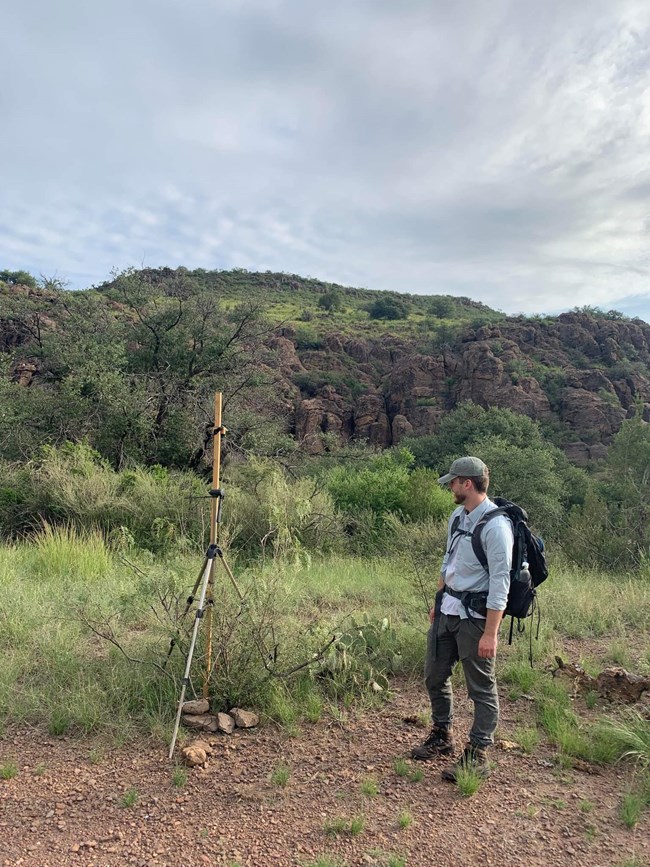
NPS Photo
Wesley arrived at Saguaro National Park excited to begin his five-month adventure. He had never been to a desert, and it held many surprises for him.
“So the first time that I saw the deserts, because I remember I arrived at night, and the following morning, I opened the windows, and then I saw for the first time, and it was really, really unexpected for me because in my mind, within a desert you only have sand, sand dunes, that kind of stuff.” - Wesley Reverdy
Wesley soon learned that, far from an empty wasteland, the Sonoran Desert was teeming with life—filled with a myriad of vegetation, wildlife, and geological wonders. Its many habitats vary from hot, arid areas to isolated islands of coniferous forests at higher elevations. Pygmy owls nestle in saguaro cactuses that can be as tall as fifty feet, while bighorn sheep climb up the desert’s steep, rugged cliffs.
After three years of classroom work, Wesley was more than ready to immerse himself into fieldwork and apply what he learned to the network’s projects.
“And I was able to bring my knowledge about that with me in the US and also, a lot of more theoretical in information knowledge, I would say. Especially about ecosystems, all the different species and that kind of stuff that that's some things that we learn a lot in France, theoretical things.” - Wesley Reverdy
Wesley worked with the Sonoran Desert Network crew on several wildlife monitoring projects, mostly focusing on park mammals and birds. He helped to deploy and retrieve camera traps at Organ Pipe Cactus National Monument and Chiricahua National Monument in Arizona. He also helped the team with data processing by identifying species on a subset of photos taken during the deployment at Chiricahua National Monument. The results of these projects will help the network to determine the areas in the parks where the species are located, and how that may be changing.
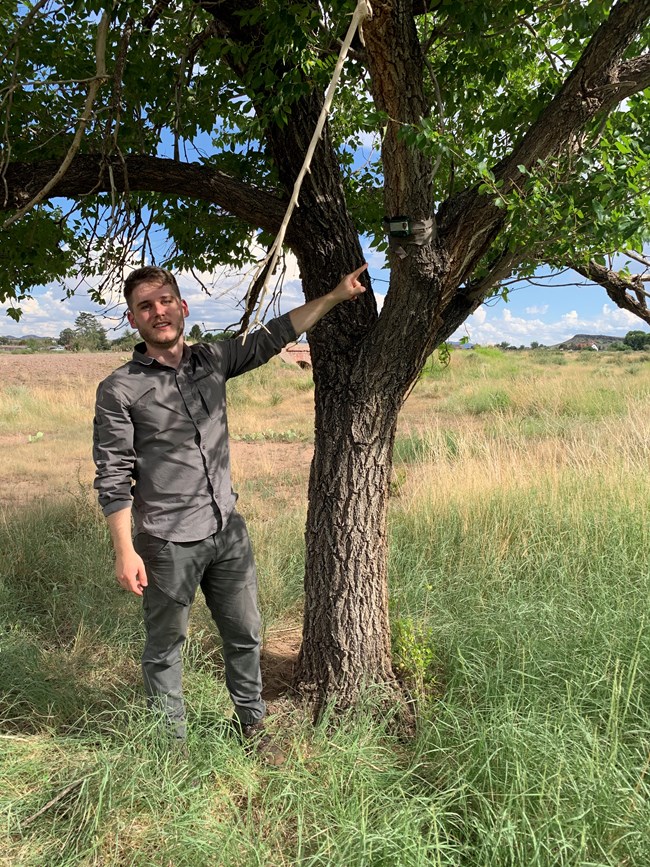
NPS Photo
Wesley was also involved in springs and streams monitoring fieldwork, mainly taking water quality and discharge measurements. At springs, he also helped collect environmental DNA, or eDNA, shed by organisms living in them.
During Wesley’s internship, he spent extended time in the backcountry of the Sonoran Desert backcountry while working on the mammal project. He camped with some of his teammates in the mountains surrounding Tucson for a week, sleeping in a hammock or a tent. It was the most time he had ever spent in the wilderness. He had wondered if he was cut out for that, and if it would be the type of work that he would like to do. It turned out to be his favorite part of his volunteer program.
“So yeah, that was really interesting for me just to see if during the long period it was still something that I would like to do, and it's the case. So yeah, that was really nice for me.” - Wesley Reverdy
Wesley’s biggest project was with the Chihuahuan Desert Network. He led a research study which established a new protocol for the acoustic monitoring of bird and bat populations. It involved deploying camera traps in the field and collecting data from them. Due to the rapid effects of climate change and the ever-changing world of science, capturing this research is vital to the future of US desert ecosystems. By using a system of recorders in the field, the team could download the information and listen to it many times, increasing the number of bird and bat species that can be identified.
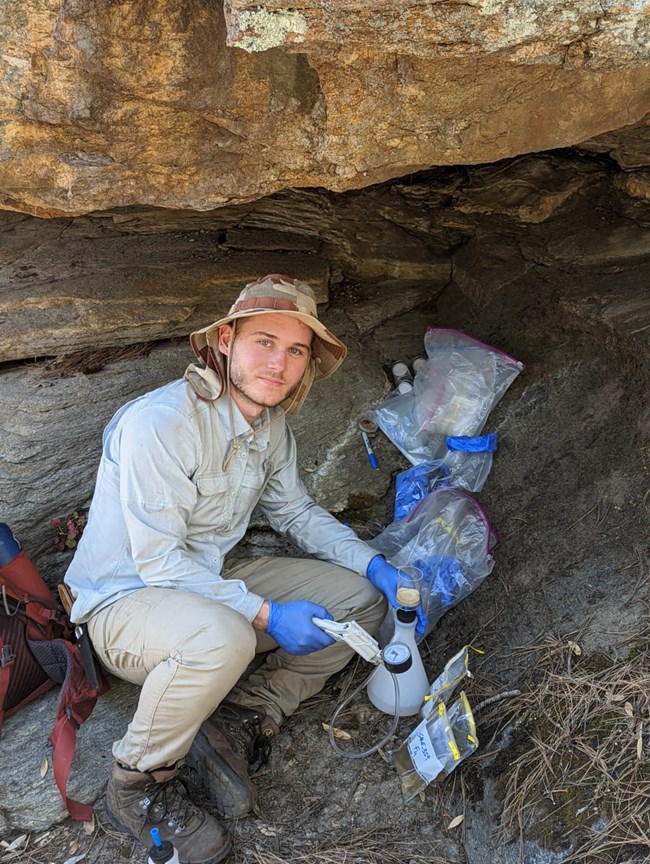
NPS Photo
“And that was really interesting because people that were working at that place since ten years, they heard on the recordings, they heard some species that they had never heard before at that place.” - Wesley Reverdy
Collecting vocalizations remotely was much more efficient than in-person observation. The project was the first deployment of acoustic devices in the network’s parks. The new method will have a huge impact on future acoustic evaluations of avian and bat populations. This could prove essential to developing management actions for climate change adaptation in the parks. Climate change is speeding up changes in ecosystems and being able to evaluate the data more quickly will help National Park Service natural resource managers to determine how to best protect these species.
Wesley’s volunteer program gave him insights into the role of scientists and natural resource managers in the national parks and gave him clarity about the next steps towards his future career.
“So my plan is to find a job in a private company for the mountain and maybe work there during two or three years to gain more knowledge, more experience. And then I will try to make one of my other biggest dream come true, because I will try to pass a national exam in France to try to get a position within the French National Park Service. So I'm sure that this experience with the US National Park Service will be a great bonus for me. So yeah, that's my plan for the future.” - Wesley Reverdy
Providing opportunities for international volunteers like Wesley allows them to test out their skills, gain new perspectives, and imagine new possibilities. For many, the self-discoveries and experiences they have working in the US national parks inspire them to pursue careers in conservation. As the National Park Service mission includes extending the benefits of national parks to the world, working with international volunteers is a great way to share it.
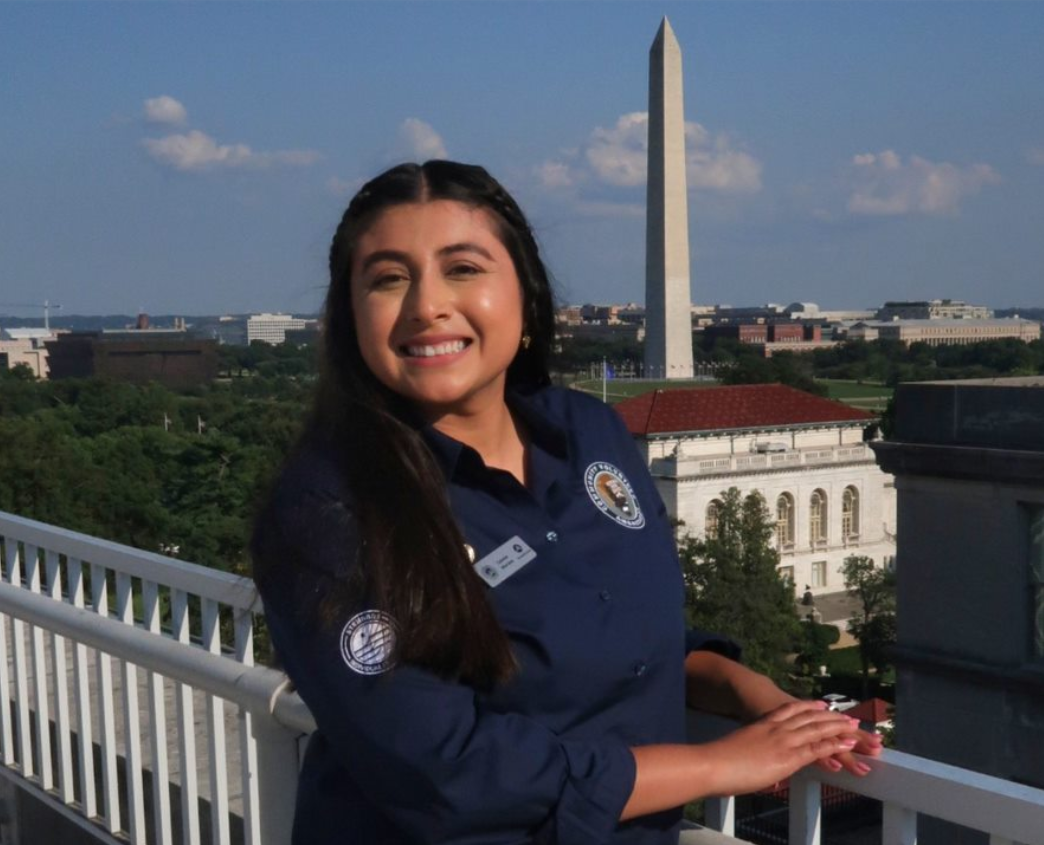
NPS Photo
Meet the Host
Celeste Morales, a Chicana with a Hispanic heritage stemming from Jalisco, Mexico, is serving as the National Leader for the Community Volunteer Ambassador Program. For the 2022 cohort of this program, she works directly with the National Park Service Washington Support Office and provides peer support to over fifty Community Volunteer Ambassadors at national park sites across the US. In her role, Celeste also serves as a liaison for the Volunteers-In-Parks Program which works to inspire the next generation of stewards through volunteer services. Celeste aspires to continue working in the field of parks and recreation to strengthen opportunities for diverse communities to show their support and commitment to permanently protecting our natural, cultural, and recreational resources.
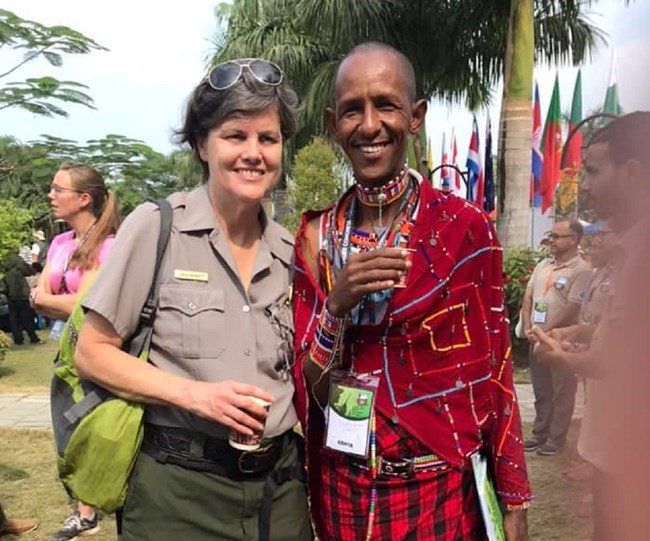
NPS Photo
Meet the International Volunteers in Parks Coordinator
Linda Bennett is an International Cooperation Specialist with the National Park Service's Office of International Affairs. She serves as the International Volunteer in Parks (IVIP) Coordinator, as well as the main contact for the National Park Service's international cooperation efforts with countries in Europe. Her 30-year career with the National Park Service has included being an interpretive ranger and volunteer coordinator at National Mall and Memorial Parks, assignments in Canyonlands National Park and Natural Bridges National Monument, and graduating the Mid-Level Intake program. She finds working with international volunteers rewarding with the knowledge that their experiences working in the US national parks will have a lasting impact upon their careers and lives.
